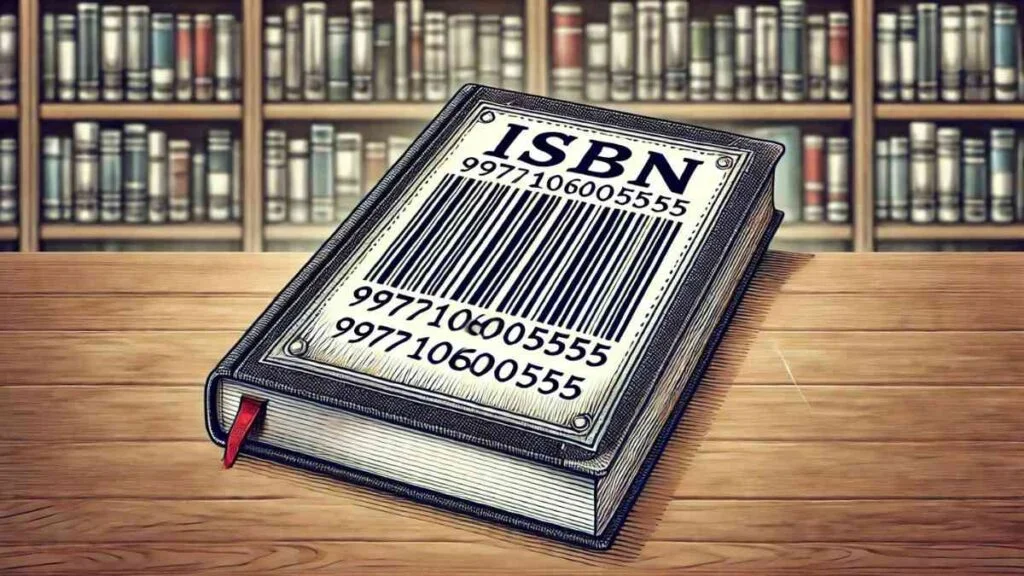Introduction
Books have always been a cornerstone of human knowledge and expression. With the advent of global publishing and the growth of the book industry, tracking and categorizing books became a necessity. This is where the International Standard Book Number, or ISBN, comes into play. Among the millions of books published worldwide, each is assigned a unique ISBN to distinguish it from others. In this blog, we’ll dive deep into the world of the ISBN system, with a specific focus on 9781016005555 ISBN10, examining its significance, structure, uses, and why it matters in today’s publishing landscape.
Whether you’re a book lover, a publisher, or simply curious about how books are cataloged and identified, this article will give you a comprehensive understanding of 9781016005555 ISBN10 and the ISBN system as a whole.
What Is an ISBN?
The ISBN, short for International Standard Book Number, is a unique numeric identifier used to categorize books. It helps publishers, booksellers, libraries, and distributors track, list, and sell books more efficiently. The ISBN was first introduced in 1970 and has since become the global standard for book identification.
ISBNs consist of either 10 or 13 digits, depending on when the book was assigned its number. The 9781016005555 ISBN10 is an example of a 10-digit ISBN, which was commonly used before 2007, after which ISBNs transitioned to 13 digits. Despite this shift, 10-digit ISBNs like 9781016005555 ISBN10 are still widely recognized and used, especially in older publications.
Breaking Down the 9781016005555 ISBN10
To understand the significance of 9781016005555 ISBN10, it’s essential to break down its components and what each part of the number represents.
- Prefix Element (978):
Although the prefix is part of the 13-digit system, for older 10-digit ISBNs, the first three digits are typically omitted. If this were a 13-digit ISBN, it would likely begin with 978, which is one of the prefixes allocated for book identification. - Group Identifier (101):
The group identifier signifies the country, geographic area, or language group of the publisher. For 9781016005555 ISBN10, the group identifier indicates a specific region or publisher within that area. The exact number may relate to English-speaking countries or a unique publisher group. - Publisher Code (600):
This part of the ISBN refers to the publisher of the book. It is assigned by the ISBN agency to each publisher, ensuring that the books they publish are uniquely identifiable. In the case of 9781016005555 ISBN10, this code signifies a particular publisher that has registered the book under this ISBN. - Title Identifier (5555):
The title identifier distinguishes the specific book or edition within the publisher’s catalog. For 9781016005555 ISBN10, the identifier signifies a particular title that was assigned this number, making it easy to differentiate from other books in the same catalog. - Check Digit:
The final digit in 9781016005555 ISBN10 is the check digit, which is calculated using a specific formula to ensure the number’s validity. It serves as a form of error detection, ensuring that the ISBN is entered or scanned correctly.
Why Is 9781016005555 ISBN10 Important?
The ISBN system as a whole serves as the backbone of the global book industry, allowing for efficient cataloging, sales, and distribution. Specifically, 9781016005555 ISBN10 plays several key roles:
- Book Identification:
Every ISBN is unique to the book it represents. 9781016005555 ISBN10 serves as a fingerprint for the book it’s assigned to, ensuring that no two books share the same number. - Ease of Access:
ISBNs like 9781016005555 ISBN10 make it easier for bookstores, libraries, and readers to locate a specific book. Whether you’re searching in a catalog, online bookstore, or library system, typing in this number will lead you directly to the book it represents. - International Use:
The ISBN system is recognized worldwide, and 9781016005555 ISBN10 can be used to track and sell books across international borders. It simplifies the process of global distribution and makes it easier for readers in different countries to find the book they’re looking for. - Cataloging and Data Systems:
For publishers, librarians, and retailers, 9781016005555 ISBN10 simplifies the organization of book data. Modern database systems rely heavily on ISBNs to manage inventories, and this unique number ensures that each book has a distinct place within those systems.
The Transition from ISBN10 to ISBN13
Before 2007, all books were assigned a 10-digit ISBN, like 9781016005555 ISBN10. However, as the number of published books grew, the ISBN system needed more digits to accommodate the expanding catalog. This led to the transition to the 13-digit ISBN system. Although 9781016005555 ISBN10 remains valid, newer publications will now carry 13-digit ISBNs.
The 13-digit format simply expands the number of possible ISBNs without changing the core functionality of the system. It provides greater flexibility for publishers and accommodates the growth of the global book market. Despite the change, older 10-digit ISBNs, including 9781016005555 ISBN10, remain relevant and are still widely used in catalogs and databases.
How ISBNs Benefit Readers and Publishers
For readers and book lovers, ISBNs like 9781016005555 ISBN10 offer several advantages:
- Quick Searches: Whether you’re looking for a specific edition or reprint, entering the ISBN directly into a search engine, online bookstore, or library system will instantly locate the book you’re seeking.
- Guaranteed Accuracy: The ISBN ensures you’re getting the exact edition of the book you want, especially important for textbooks, where different editions may have significant changes.
- Convenient Purchases: In online shopping, entering the ISBN ensures you’re ordering the right book, preventing mistakes or confusion between similarly titled works.
For publishers, ISBNs streamline the entire publishing and distribution process:
- Efficient Sales Channels: ISBNs enable easier sales on platforms like Amazon, Barnes & Noble, and other online bookstores, where ISBNs are often the primary search criterion.
- Inventory Management: Retailers and libraries rely on ISBNs like 9781016005555 ISBN10 for managing stock, orders, and sales, allowing for smoother operations and customer service.
- Global Reach: As an international standard, ISBNs make it easier to reach audiences worldwide. The same ISBN can be used to sell the book across multiple countries, simplifying the distribution process.
How to Search for Books Using ISBN10
Finding a book using 9781016005555 ISBN10 is straightforward. Here are the steps you can follow:
- Online Bookstores: Websites like Amazon, Book Depository, and others allow you to search for books using their ISBNs. Simply enter 9781016005555 ISBN10 into the search bar, and the exact book will be displayed.
- Library Databases: Libraries use ISBNs to catalog their books. Searching for 9781016005555 ISBN10 in a library’s online catalog will help you find the book you need.
- ISBN Lookup Websites: There are dedicated websites that allow users to look up ISBNs. Enter 9781016005555 ISBN10, and you will be provided with details about the book, its publisher, and its availability.
Conclusion
In the world of books, ISBNs serve as a vital tool for tracking, cataloging, and selling publications. The 9781016005555 ISBN10 is a perfect example of how these identifiers make it easier to find, purchase, and enjoy books across the globe. As you explore the vast universe of literature, remember that every ISBN tells its own story—one that makes it easier for readers and publishers to connect with each other.
Whether you’re searching for a book online or managing an extensive library collection, ISBNs like 9781016005555 ISBN10 play a crucial role in ensuring that every book finds its way into the right hands. As technology and publishing continue to evolve, the ISBN system will remain a cornerstone of the industry, offering readers a simple, reliable way to access the books they love.
FAQs
1. What is 9781016005555 ISBN10?
The 9781016005555 ISBN10 is a unique 10-digit identifier used to track and catalog a specific book. It helps publishers, bookstores, and libraries easily identify the book within their inventory and systems.
2. How is an ISBN10 different from ISBN13?
ISBN10 is a 10-digit book identifier used prior to 2007, while ISBN13 is the current 13-digit system. Both serve the same purpose of uniquely identifying books, but ISBN13 includes an additional prefix for global standardization.
3. Can I still use ISBN10, like 9781016005555 ISBN10, today?
Yes, older books still carry the ISBN10 format, and it is still valid. Many systems, including libraries and bookstores, can recognize both ISBN10 and ISBN13 formats.
4. How do I find a book using 9781016005555 ISBN10?
You can search for a book using 9781016005555 ISBN10 in online bookstores, library databases, or dedicated ISBN lookup websites. This ensures you find the exact edition of the book you’re looking for.
5. Why is 9781016005555 ISBN10 important for publishers?
ISBNs like 9781016005555 ISBN10 help publishers manage their catalogs, track sales, and distribute books globally. It simplifies inventory management and ensures each book has a unique identity in the market.







